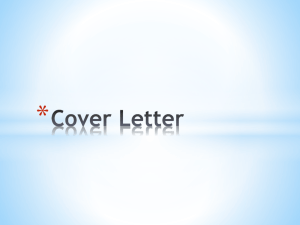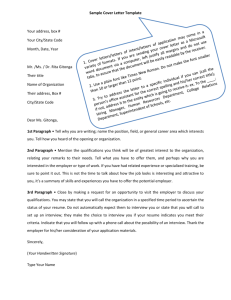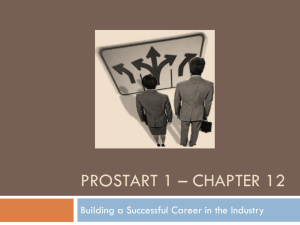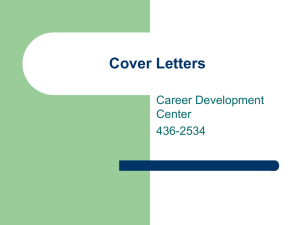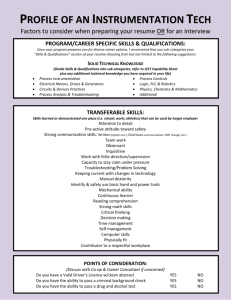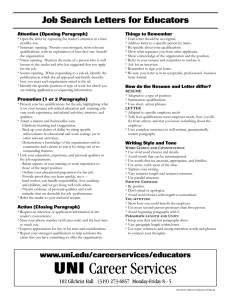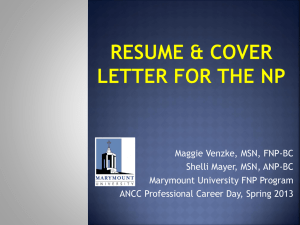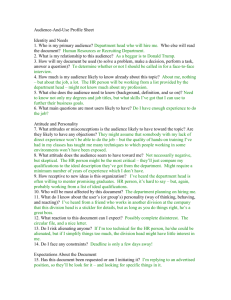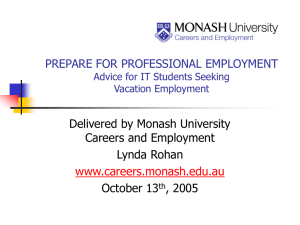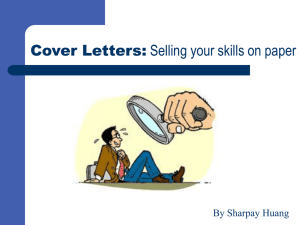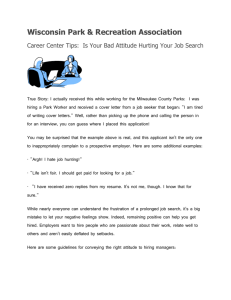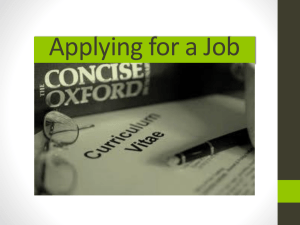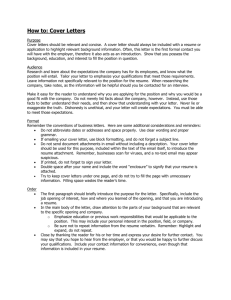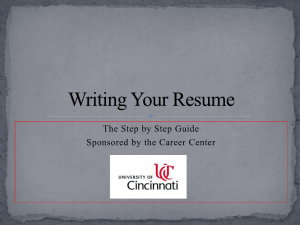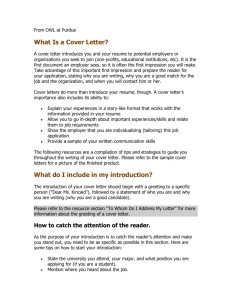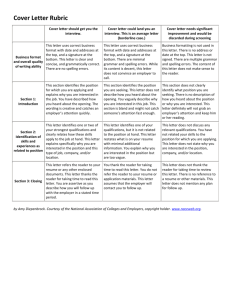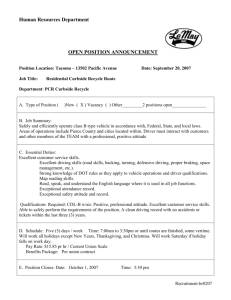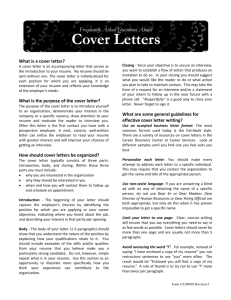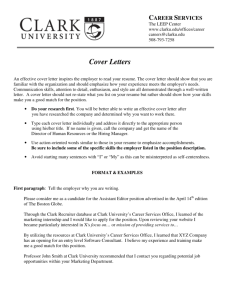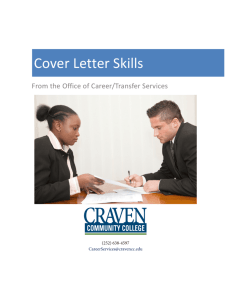Application/Cover Letter
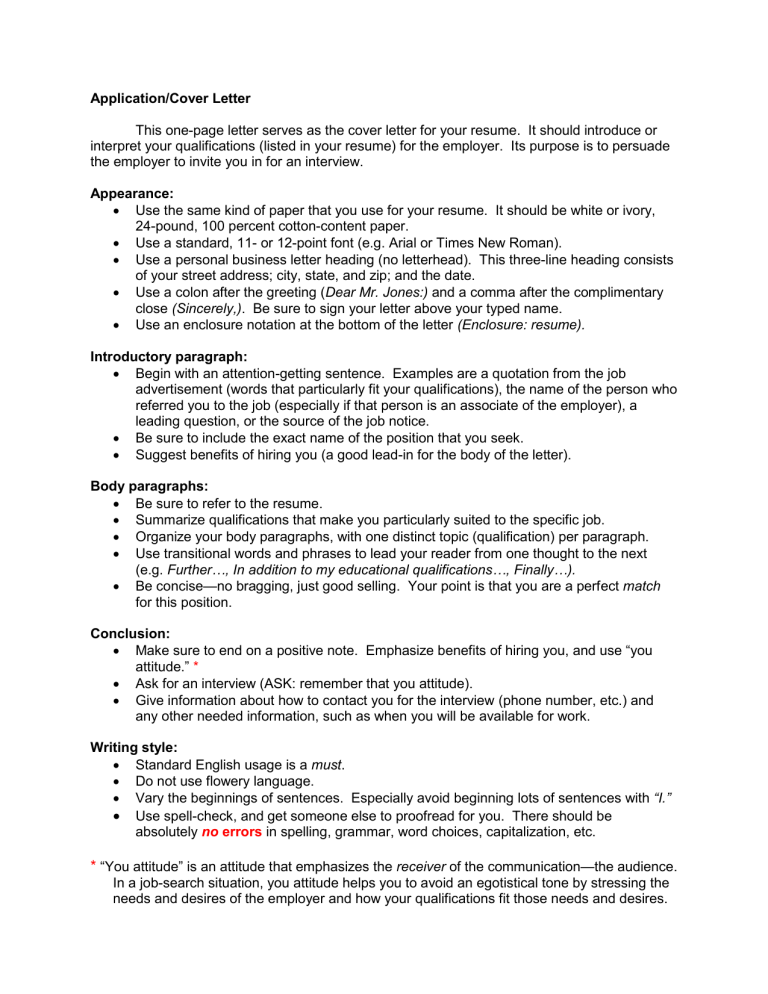
Application/Cover Letter
This one-page letter serves as the cover letter for your resume. It should introduce or interpret your qualifications (listed in your resume) for the employer. Its purpose is to persuade the employer to invite you in for an interview.
Appearance:
Use the same kind of paper that you use for your resume. It should be white or ivory,
24-pound, 100 percent cotton-content paper.
Use a standard, 11- or 12-point font (e.g. Arial or Times New Roman).
Use a personal business letter heading (no letterhead). This three-line heading consists of your street address; city, state, and zip; and the date.
Use a colon after the greeting ( Dear Mr. Jones:) and a comma after the complimentary close (Sincerely,) . Be sure to sign your letter above your typed name.
Use an enclosure notation at the bottom of the letter (Enclosure: resume).
Introductory paragraph:
Begin with an attention-getting sentence. Examples are a quotation from the job advertisement (words that particularly fit your qualifications), the name of the person who referred you to the job (especially if that person is an associate of the employer), a leading question, or the source of the job notice.
Be sure to include the exact name of the position that you seek.
Suggest benefits of hiring you (a good lead-in for the body of the letter).
Body paragraphs:
Be sure to refer to the resume.
Summarize qualifications that make you particularly suited to the specific job.
Organize your body paragraphs, with one distinct topic (qualification) per paragraph.
Use transitional words and phrases to lead your reader from one thought to the next
(e.g. Further…, In addition to my educational qualifications…, Finally…).
Be concise —no bragging, just good selling. Your point is that you are a perfect match for this position.
Conclusion:
Make sure to end on a positive note. Emphasize benefits of hiring you, and use “you attitude.” *
Ask for an interview (ASK: remember that you attitude).
Give information about how to contact you for the interview (phone number, etc.) and any other needed information, such as when you will be available for work.
Writing style:
Standard English usage is a must .
Do not use flowery language.
Vary the beginnings of sentences. Especially avoid beginning lots of sentences with
“I.”
Use spell-check, and get someone else to proofread for you. There should be absolutely no errors in spelling, grammar, word choices, capitalization, etc.
* “You attitude” is an attitude that emphasizes the receiver of the communication —the audience.
In a job-search situation, you attitude helps you to avoid an egotistical tone by stressing the needs and desires of the employer and how your qualifications fit those needs and desires.
